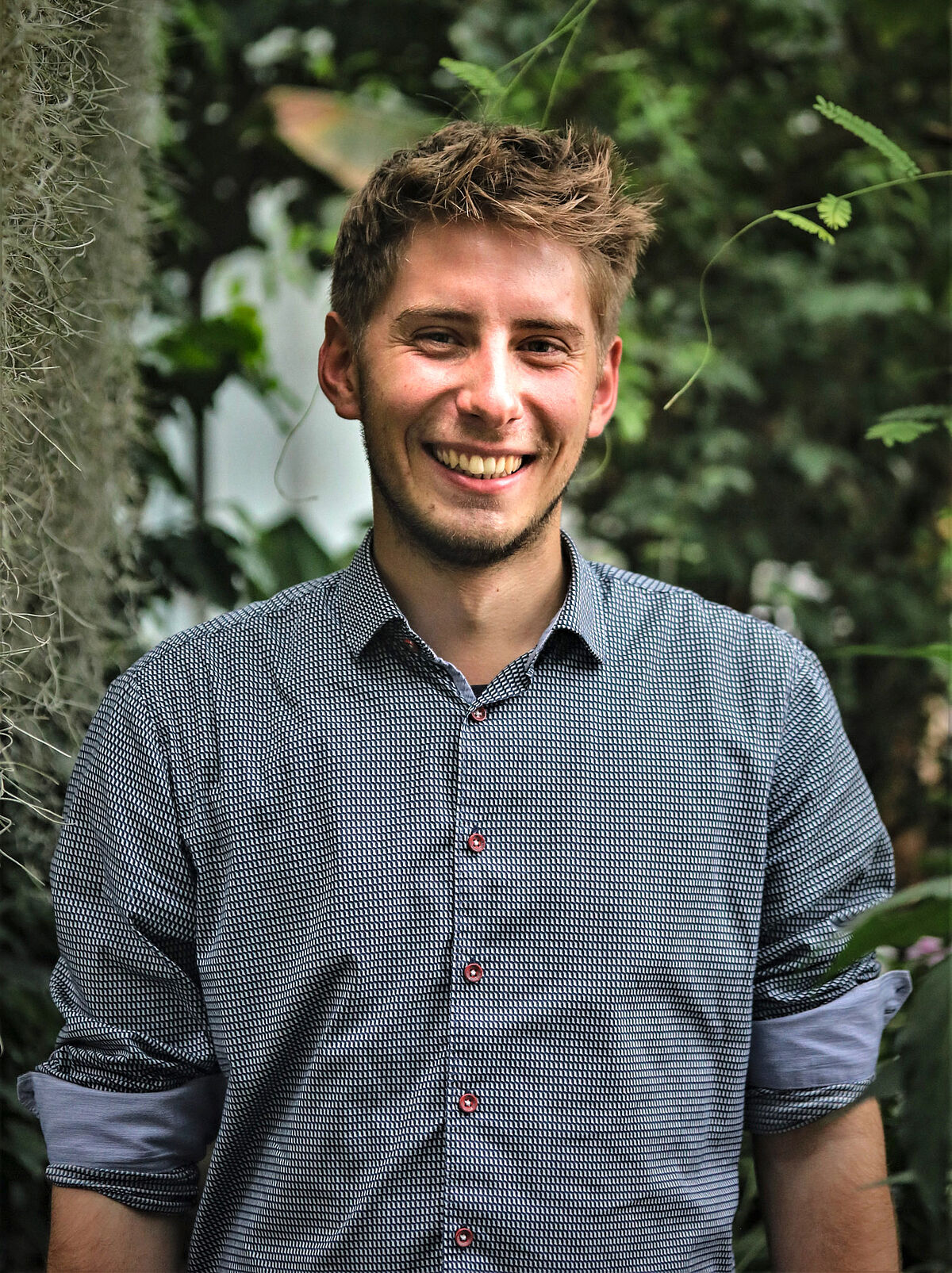
Julien León Bota
Applied Zoology and Nature Conservation
Loitzer Str. 26
17489 Greifswald
ORCID: https://orcid.org/0000-0002-7127-0134
ResearchGate: https://www.researchgate.net/profile/Julien-Bota
Twitter: https://twitter.com/bota_jb
Research Interests

Mutualism
Mutualisms are some of the most momentous and omnipresent organism-to-organism interactions on earth. Despite their ubiquity and importance, knowledge about the evolution and persistence of mutualism is still sparse. To contribute to a better understanding, I study the following systems:
Interactions between pitcher plants and microbes
Pitcher plants of the genus Nepenthes are promising model systems to study mutualisms as diverse multispecies interactions related to nutrient sequestration evolved repeatedly in different ecological contexts. Apart from attracting and digesting prey, the pitcher traps also accommodate a highly diverse micro-inquiline community that includes fungi, protists and green algae but also bacteria which are the most abundant organisms. So far, it is unclear, whether they support prey digestion or compete with Nepenthes for nutrients. To investigate this, I experimentally provide the insectivorous Nepenthes rafflesiana and its carnivorous sister species N. hemsleyanawith prey items, reduce microbial abundance in the digestive fluid and measure the effects on plant performance.
Interactions between the rattan palm Korthalsia robusta and Camponotus ants
Ant-plant interactions where ants protect their host plants against herbivores in return for shelter and feeding grounds for their trophobionts are a common feature of tropical ecosystems. These interactions may involve several alternative partner species and the outcome is strongly context-dependent. This is also true for the palaeotropic rattan palm Korthalsia robusta that is commonly associated with two Camponotus species that tend aphids for honeydew production. Based on experimental approaches and observations from the field, I investigate the outcome of these interactions.
Vibratory communication
Communication via vibrations is a widespread communication mode in the animal kingdom. Vibrational signals can be created e.g., through drumming, tremulation, stridulation or vocalisations and are often used in the context of mating, group communication and predator-prey interactions. Despite its ubiquity, many aspects of this mode of communication - especially interactions with airborne sound - are still not well understood.
Vibrational alarm signals of Camponotus ants which are associated with the rattan palm Korthalsia robusta
In this context, I am investigating two Camponotus species that are associated with the rattan palm Korthalsia robusta and produce vibrational alarm signals when they are disturbed. For this purpose, they beat their mandibles and abdomens on the plant surface which evokes apart from vibrations a loud rustling sound which may function as a vibro-acoustic aposematism to deter predators or put neighbouring ant colonies on alert. Currently I’m describing the vibrational signals of the two ant species and investigate their function with a special focus on the acoustic component. Furthermore, I am testing in experimental approaches whether the rattan palm acts as a mediator between these different modalities.
Publications and Conference contributions
Posters
- “Flip it! Von umgedrehter Vorlesung zur alternativen Prüfungsform“ - interStudies_2 Jahrestagung 2019: UPtoDATE: Hochschullehre im digitalen Zeitalter, Greifswald (2019, equal contribution by Prof. Dr. Martin Wilmking & Julien Bota)
- „Camponotus spp. as a mobile task force against herbivores of the rattan palm Korthalsia robusta“ - 112th Annual Conference of the German Zoological Society, Jena (2019)
- „Rustling ants: percussive communication performed by two Camponotus species in Borneo“ - 2nd International Symposium on Biotremology, Riva del Garda, Italy (2018)
CV
Education
- 2021 Master thesis “The ecological role of microbes in the digestive process of Nepenthes hemsleyana & N. rafflesiana“, Supervisors: Dr. Michael Schöner, Prof. Dr. Jürgen Kreyling
- 04/2019 – 06/2021 M. Sc. Biodiversity & Ecology, University of Greifswald
- 2019 Bachelor thesis “Interactions between ants (Camponotus spp.) and the rattan palm Korthalsia robusta on Borneo“, Supervisors: Dr. Michael Schöner, Dr. Monika Eberhard
- 10/2015 – 05/2019 B. Sc. Landscape Ecology & Nature Conservation, University of Greifswald
Field trips
- 01/2017 – 02/2018 Biological field research in Sarawak/Malaysia
Awards
- 2019: Poster award, interStudies_2 Jahrestagung 2019: UPtoDATE: Hochschullehre im digitalen Zeitalter, University of Greifswald
- 2018: Springer Young Research Awards, 2nd International Symposium on Biotremology, Riva del Garda, Italy
Scholarships
- 2015 - 2021 German Academic Scholarship Foundation (Studienstiftung des deutschen Volkes)
